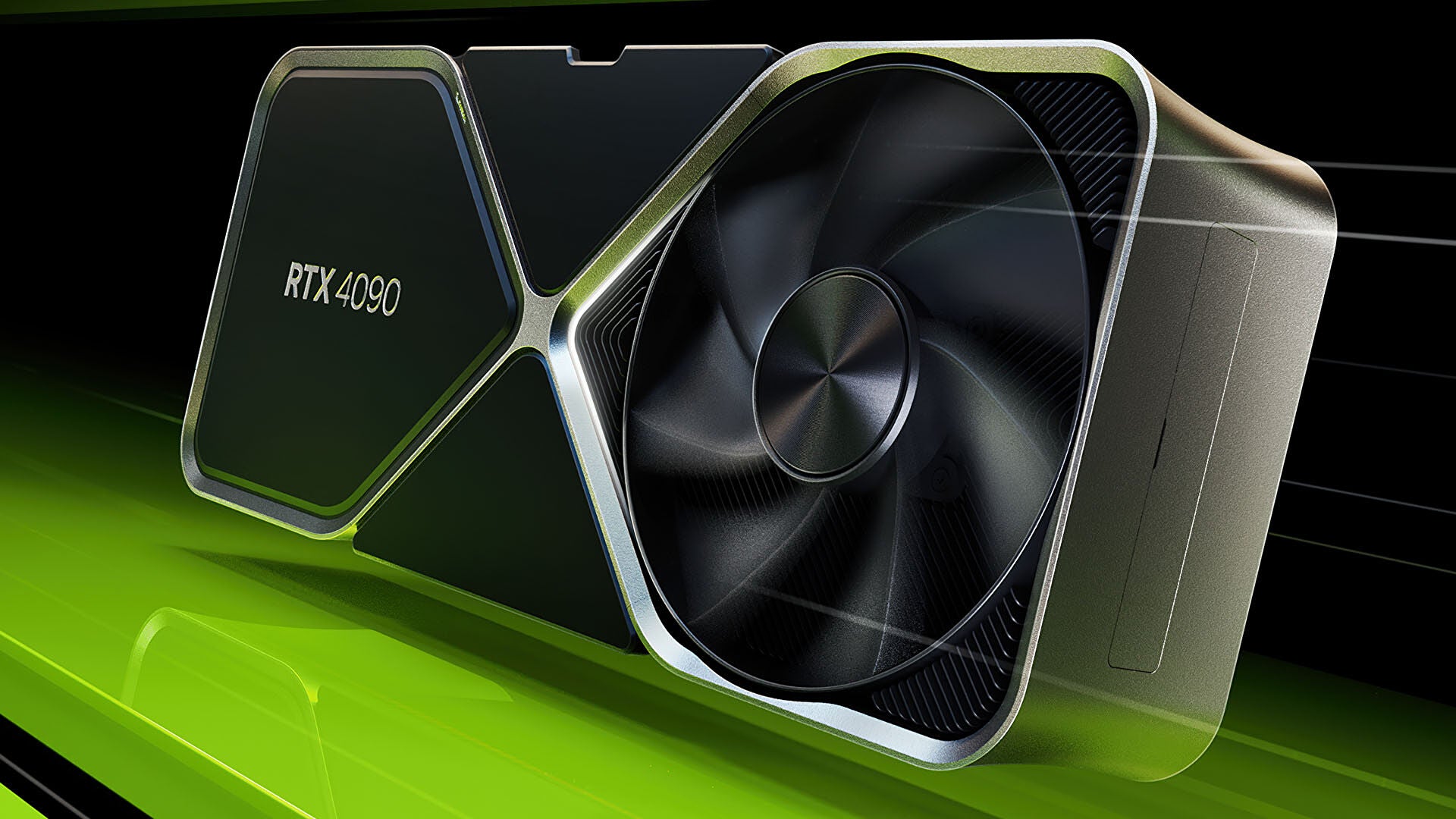Products You May Like
The time has come for a new graphics refresh – two years on from its last major generational leap, graphics powerhouse Nvidia has today unveiled the GeForce RTX 40 Series GPUs – the market leader’s vision for the next generation of PC graphics technology.
In a lengthy keynote video that touched on everything from gaming graphics to the use of Nvidia AI to improve self-driving cars, Nvidia CEO Jensen Huang detailed the company’s vision of the future, powered by the new Ada Lovelace architecture – named after the famed mathematician who is frequently called the first-ever computer programmer.
The new Lovelace architecture offers a significant power jump, which means large gains fore the new 40 series GPUs – of which, initially, there will be three.
The RTX 4090 is the new flagship, and says it offers up to four times the performance of its direct predecessor, while packing in 24gb of memory. It’ll release on October 12th, and at that point will be, Huang says, the most powerful consumer GPU on the market. All that power doesn’t come cheap, however – it’ll set you back $1599.
A month later it’ll be joined by two variations of the RTX 4080. Memory is the primary difference between the two iterations, with a 16gb version and a 12gb version releasing simultaneously. This is supposedly equivalent in power to the RTX 3080 Ti, but also gains access to some new 40-series exclusive features. The 16gb model will cost $1199, while the 12gb version will set players back $899.
Across the board, the 40 series GPUs have several improvements over the last-generation versions including a new generation of RT Cores and Tensor Cores, double the throughput in their streaming multiprocessors, and more.
Our friends at DigitalFoundry have had an opportunity to check out the 4090 already – we’ve embedded their coverage teaser video early on in this article. We’ll have our official VG247 tests in due course, too – so look forward to that.
For gamers, the biggest single new piece of news aside from the new hardware is the reveal of DLSS 3.0, an improved version of the impressive technology that allows players to achieve higher frame rates in games without any perceptible loss in visual fidelity. DLSS, aka Deep Learning Super Sampling, has been around for a while – but this new version is exclusive to the 40 series – in a move that’s likely to frustrate those with 20 series cards that are a couple of years old or newer.
Like previous versions, DLSS 3 will require developers to update their games to support it – but already, there’s over 35 games and applications that’ll support it from launch. In the broadcast, Nvidia highlighted the improvement and performance gains the feature unlocks in a few games, giving an example of what gamers can expect.
One example shows Cyberpunk running with Ray Tracing maxed out. With DLSS off it manages 22 fps – flick on DLSS 2 and you get 62fps. DLSS 3 touches the 100fps mark, meanwhile. In Microsoft Flight Simulator, DLSS 3 raises the frame rate from around 60fps with DLSS off all the way up to over 120fps with it on.
All told, it appears to be very impressive – though the cost of this sort of hardware is high both in terms of the initial outlay and in how much it costs to run as energy prices soar. It’s thrilling to see a new generation of graphics hardware, however – and we can’t wait to test it. Keep it here – we’ll be back with coverage as soon as we can get hands-on.
